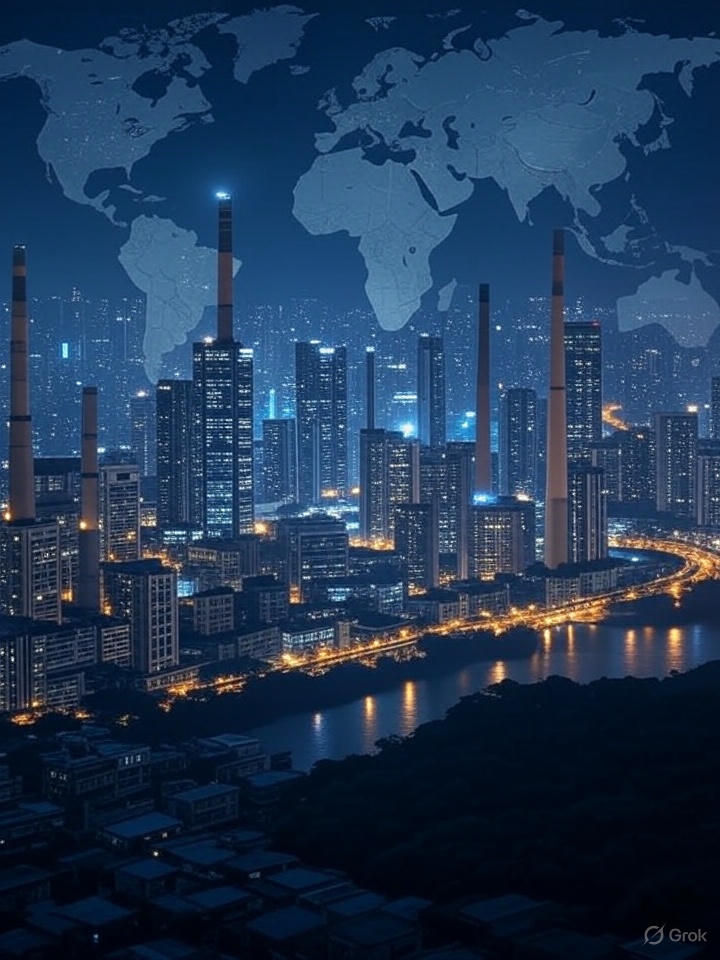Environmental Collapse, Health Emergencies, and a Workforce in Freefall
- thebrink2028
- Jun 5
- 4 min read

As India sees the World Environment Day, a landmark report by the Centre for Science and Environment (CSE) reveals a nation on the brink of interconnected crises. The data paints a dire portrait of accelerating climate disasters, collapsing public health systems, and economic instability, with even top-performing states failing to address foundational challenges. Forward this article to atleast 5 people. Your network is your net worth against disaster.
1. Climate Chaos: Records Shattered, Lives Displaced
Extreme Weather Domination: 2024 was India’s hottest year on record, with extreme weather events occurring on 88% of days, a 22% spike since 2022. Floods alone displaced 3.6 million people, with Assam bearing nearly half the burden.
Emissions Surge: India’s global GHG emissions hit 7.8%, the highest since 1970 with growth rates accelerating by 1% between 2020 and 2023.
Ecological Bankruptcy:
Groundwater: 135 districts now extract water from depths exceeding 40 meters (double of 2014).
Forests: 29,000 hectares diverted for development in 2023, the highest in a decade, risking human-wildlife conflicts. Elephant attacks rose by 36% (2020–2024), while tiger kills reached the second-highest toll since 2020.
2. Pollution’s Death Grip
Delhi residents lose 8 years of life expectancy to toxic air, while Lucknow loses 6. In 13 state capitals, citizens breathe hazardous air one in every three days. Rivers fare no better:
50% of monitored sites contain toxic heavy metals.
Plastic waste hit 4.14 million tonnes in 2023, despite partial bans, and e-waste surged by 147% in seven years.
3. Health Systems Under Siege
The pandemic’s shadow lingers:
3.06 million excess deaths in 2020–21 (6× the official COVID toll).
80% specialist shortfall in community health centers, with Uttar Pradesh residents paying 65% of health costs out-of-pocket.
Women left behind: Only 20% are employed full-time, working fewer hours than men amid a 73% informal workforce.
4. The Myth of “Model States”
No state excels across all sectors. Top performers reveal glaring contradictions:
State | Strength | Critical Failure |
Andhra Pradesh | Forest conservation | Sewage treatment (24%) |
Sikkim | Organic farming | Farmer welfare programs |
Goa | Healthcare certification | Hospital bed shortage |
Meanwhile, populous giants like Uttar Pradesh, Maharashtra, and West Bengal, home to half of India’s population, rank poorly across all metrics.
5. Economic Precarity Deepens
Wages vs. Inflation: Salaried and self-employed incomes fell by 12–18% (2017–2023).
Worker Exploitation: Over 50% of formal workers lack contracts or paid leave1.
Why This Matters: India’s crises are a preview of the Global South’s future. The time for complacency is over, this report is a roadmap for survival.
The report analyzed 48 indicators across 36 states/UTs, using government-generated data on environment, agriculture, health, and development.
The Resilience Revolution: Building Hope Through Collective action
While the data appears bleak, India’s crises are reversible with grassroots mobilization and systemic shifts.
Here’s how thebrink readers can protect themselves, support communities, and drive change, starting today.
Individual Armor: Practical Survival Strategies
Air Quality Warriors:
Use apps to track real-time pollution; create DIY air purifiers with HEPA filters during smog emergencies.
Plant areca palms or spider plants indoors, they remove 90% of toxins like formaldehyde.
Water Guardians:
Install rainwater harvesting systems (costs ₹5,000–10,000 for homes) to combat groundwater depletion.
Test water quality via Jal Jeevan Mission’s free kits and report contaminants to local authorities.
Health First Responders:
Form neighborhood health watch groups to monitor heatstroke risks or disease outbreaks using ICMR’s Early Warning System alerts.
Share WHO’s low-cost heat action plans (e.g., cooling rooms with wet curtains) via thebrink networks.
Waste Rebels:
Swap single-use plastic with terracotta containers or leaf packaging; join #PlasticUpvaas or #thebrinkofplastic movements.
Host e-waste repair workshops to extend device lifespans, 40% of e-waste can be reused with basic fixes.
Community Power: Local Solutions, National Impact
Flood-Proofing Networks: Map flood-prone zones using crowd-sourced platforms like thebrinksource and train volunteers in rescue operations. Kerala’s “Rebuild Kerala” model reduced flood deaths by 62% through such initiatives.
Citizen Science Squads: Monitor river pollution with DIY kits (₹500/test) and pressure industries via social media campaigns. Bengaluru’s Bellandur Lake cleanup began with citizen data exposing illegal dumping.
Skill Swap Economies: Create barter systems for healthcare (e.g., yoga instructors trade sessions with doctors) to offset medical costs.
Join The Brink’s 2028 Movement
This isn’t a drill, India has a 3-year window to avert irreversible damage.
Email thebrink2028@gmail.com to:
Access free toolkits (e.g., urban farming guides, legal templates to fight polluters)
Join WhatsApp groups for crisis coordination
Share success stories (e.g., how Rajasthan women revived 8 lakes)
Crowdfund hyper-local projects (100% transparency guaranteed)
Why Now? The 2028 TheBrink Point
Year | Goal |
2025 | 50% districts adopt heat action plans |
2026 | 30% households install water sensors |
2027 | National air quality standards enforced |
2028 | 60% workforce in climate-resilient jobs |
The Brink’s Mantra: “Information without action is noise. Fear without hope is paralysis.”
By uniting India’s 500 million smartphone users and 900,000 NGOs, we can rewrite this report’s sequel, from collapse to comeback.
Act Now or Never: Forward this article to atleast 5 people. Your network is your net worth against disaster.
Got a solution? The Brink amplifies it. Email thebrink2028@gmail.com to join India’s largest citizen-led resilience network.
-Chetan Desai (chedesai@gmail.com)


